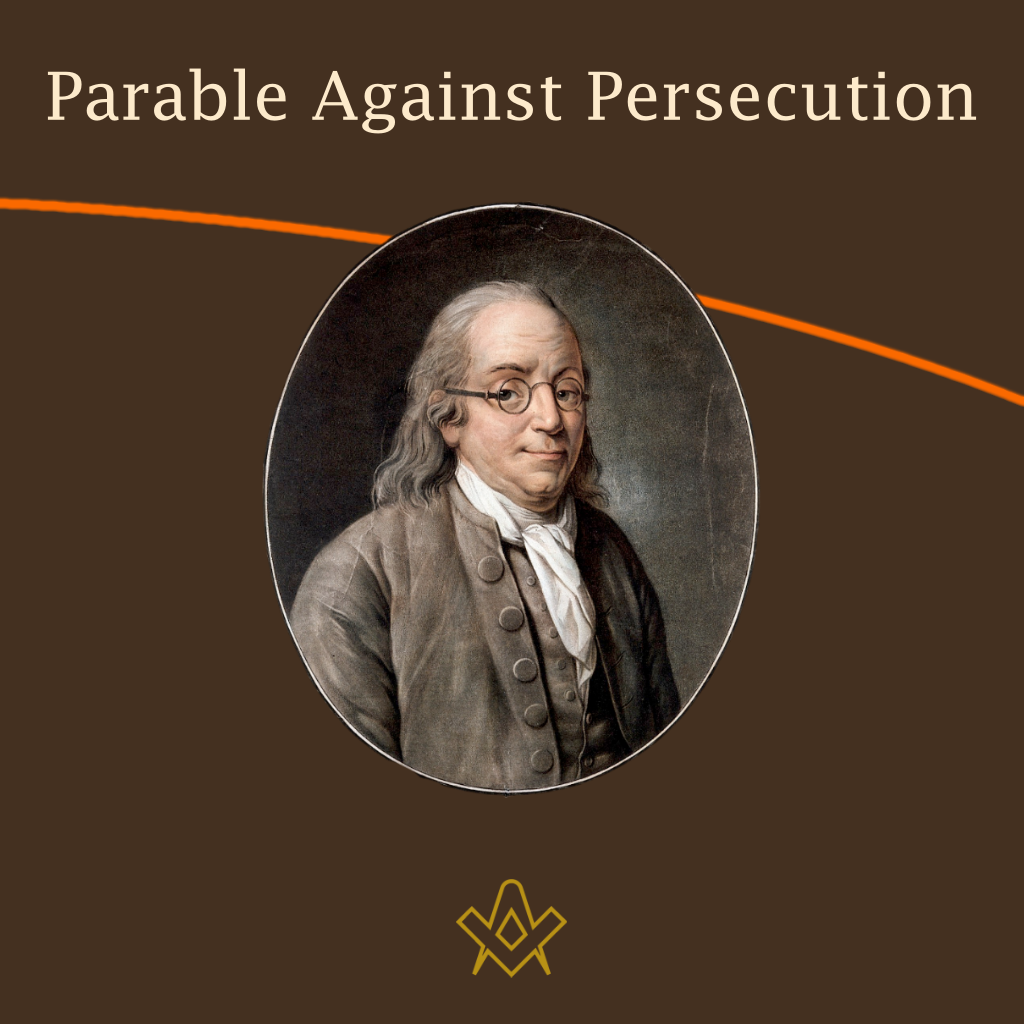According to Benjamin Franklin’s letters, he took the inspiration for two of his parables “from an ancient Jewish tradition”.
One of these parables – commonly referred to as the Parable against Persecution, or Abraham and the Stranger – is a story about the biblical patriarch Abraham, told in King James Version language, which expounds the obligation of religious tolerance.
Although Franklin did not mention the second parable by name, this has long been thought to be his Parable on Brotherly Love, and in 1947 Rabbi Max Gruenewald demonstrated how it draws on rabbinic source materials.
Franklin (January 17, 1706–April 17, 1790) composed the Parable against Persecution no later than 1755 and brought it with him from the American colonies to England.
Exceedingly fond of hoaxes, he memorised the parable and would “read” it aloud from the Book of Genesis, thus “proving” the scriptural importance of religious tolerance to his listeners.
Below is the version of Franklin’s parable offered at Founders Online, a National Archives website providing fully annotated documents from the Founding Fathers Papers projects:
1. And it came to pass after these Things, that Abraham sat in the Door of his Tent, about the going down of the Sun.
2. And behold a Man, bowed with Age, came from the Way of the Wilderness, leaning on a Staff.
3. And Abraham arose and met him, and said unto him, Turn in, I pray thee, and wash thy Feet, and tarry all Night, and thou shalt arise early on the Morrow, and go on thy Way.
4. And the Man said, Nay, for I will abide under this Tree.
5. But Abraham pressed him greatly; so he turned, and they went into the Tent; and Abraham baked unleavend Bread, and they did eat.
6. And when Abraham saw that the Man blessed not God, he said unto him, Wherefore dost thou not worship the most high God, Creator of Heaven and Earth?
7. And the Man answered and said, I do not worship the God thou speakest of; neither do I call upon his Name; for I have made to myself a God, which abideth alway in mine House, and provideth me with all Things.
8. And Abraham’s Zeal was kindled against the Man; and he arose, and fell upon him, and drove him forth with Blows into the Wilderness.
9. And at Midnight God called unto Abraham, saying, Abraham, where is the Stranger?
10. And Abraham answered and said, Lord, he would not worship thee, neither would he call upon thy Name; therefore have I driven him out from before my Face into the Wilderness.
11. And God said, Have I born with him these hundred ninety and eight Years, and nourished him, and cloathed him, notwithstanding his Rebellion against me, and couldst not thou, that art thyself a Sinner, bear with him one Night?
12. And Abraham said, Let not the Anger of my Lord wax hot against his Servant. Lo, I have sinned; forgive me, I pray Thee:
13. And Abraham arose and went forth into the Wilderness, and sought diligently for the Man, and found him, and returned with him to his Tent; and when he had entreated him kindly, he sent him away on the Morrow with Gifts.
14. And God spake again unto Abraham, saying, For this thy Sin shall thy Seed be afflicted four Hundred Years in a strange Land:
15. But for thy Repentance will I deliver them; and they shall come forth with Power, and with Gladness of Heart, and with much Substance.
Not only is the Parable against Persecution not found in Genesis, it may not actually be based on “an ancient Jewish tradition” either, for the parable as a whole has no known rabbinic source.
Rather, researchers have concluded that the story reached Franklin by way of the writings of Jeremy Taylor (1657); Taylor, in turn, copied it from George Gentius (1651); Gentius, for his part, attributed it to the “illustrious author Sadus”, the medieval Muslim Persian poet Sa’di (1257); Sa’di began his version with: “I have heard that once…”; and so the trail ends with Sa’di.
Though Franklin’s parable does have biblical and rabbinic elements (Rabbi Arthur Chiel, in a 1976 article, has documented some of the Jewish aspects of Franklin’s text) – such as Abraham’s tremendous concern with hospitality in both biblical and rabbinic writings; Abraham’s insistence, in rabbinic texts, that his guests bless God after eating; Abraham’s violent opposition, in rabbinic texts, to idolatry; and the element of God’s instruction on forbearance to a prophet vexed by human infidelity, as is found in the Book of Jonah – no Jewish source has yet been discovered containing the key section of the parable in which Abraham learns the lesson of religious tolerance.
The late Franklin scholar Leo Lemay averred that Franklin knew that the source of his parable was the poet Sa’di and that this was Franklin’s underlying ironic joke: his Christian audience “generally assumed it was a Christian document” with a good Christian moral, and was unaware that the parable derived from a semi-sacred Muslim text.
However, it is not apparent that Franklin was conscious of the story’s Persian derivation, and Lemay offered no support for his position.
Although there is no identifiable Jewish foundation for the part of the parable dealing specifically with religious tolerance, there is no reason to suppose that Franklin (following Taylor, who had inaccurately described it as “a Story which I find in the Jews Books”) did not believe the parable was based on an ancient Jewish tradition.
When it was found that less-ancient writers had also told this parable, Franklin was accused of plagiarism. Defending himself in the postscript of a letter, dated 2 November 1789, to Benjamin Vaughan, Franklin wrote:
“The truth is, as I think you observe, that I never published that Chapter, and never claimed more credit from it, than what related to the style, and the addition of the concluding threatening and promise.”
He also insisted that “on account of the importance of its moral”, the parable was “well worth being made known to all mankind”.
Franklin’s use of the parable exemplifies much more than just his penchant for hoaxes.
He saw a positive societal role for faith and worship, and in his autobiography, he professed an interest in projects “serviceable to People in all Religions”.
In both word and deed, he was generally an advocate for religious tolerance and inclusiveness.
In 1788, when the members of Congregation Mikveh Israel – the oldest formal Jewish congregation in Philadelphia – were overburdened with debt incurred from constructing their synagogue, they turned to their neighbours, “worthy fellow Citizens of every religious Denomination”, for assistance.
Among those stepping forward to help was Franklin, who, in a move very much in line with his attitude toward religion, assisted in alleviating the synagogue’s debt and ensuring a continued Jewish presence in Philadelphia with a donation of five pounds.
Edwin Wolf and Maxwell Whiteman, in their The History of the Jews of Philadelphia from Colonial Times to the Age of Jackson (1957), note that the amount of money contributed by Franklin and other non-Jews “was not – it is true – very large, but it heartened the Jews of Philadelphia”.
Fittingly, when Franklin passed away two years later, at age eighty-four, his funeral procession in Philadelphia, as reported in the newspapers, was led by “All the Clergy of the city, including the Ministers of the Hebrew congregation”.
An adaptation of Franklin’s Parable against Persecution entered Jewish literature in 1844, with the posthumous publication of a Hebrew translation done by Rabbi Nachman Hacohen Krochmal (which George Alexander Kohut republished in 1902).
Krochmal’s “Moral Parable” lacked any reference to Franklin, and he modified Franklin’s final two verses, omitting mention of affliction in “a strange Land” (Egypt) as well as the triumphant exodus that would follow.
Yosef Klausner, in a 1929 Hebrew essay, reasoned that Krochmal modified the parable because he “apparently did not want to mention the Egyptian exile so as not to also mention the exodus from Egypt ‘with Power’ (by means of ‘ten plagues’), and particularly – ‘with much Substance’…”
Klausner ended this explanation elliptically, without a suggestion for why Krochmal would have wanted to obscure the violent and plunderous manner in which the Israelites finally obtained their long-withheld freedom, as described by the Hebrew Bible and echoed in Franklin’s parable.
Was Klausner implying that the way the Israelites’ Egyptian oppressors were dealt with runs counter to the parable’s moral message of religious tolerance or appears avaricious?
Perhaps a simpler explanation for Krochmal’s alteration is that those two verses added by Franklin to the parable (they are not found in Sa’di’s story) overtly contradict Jewish beliefs about why the Israelites were enslaved and about why they later departed Egypt with great wealth.
The verses are unsupported by Jewish tradition, and so, instead, Krochmal’s Hebrew translation concludes with God promising Abraham that due to his devotion, the covenant with his future descendants will be remembered:
“But I will not breach my covenant with them, and will return them to their land; they will be my nation and I will be their God for eternity.”
Feature Image Credit: Portrait of Benjamin Franklin. Wellcome Collection. Attribution 4.0 International (CC BY 4.0)
Reference: https://founders.archives.gov/documents/Franklin/01-06-02-0063
Ebook: Autobiography of Benjamin Franklin: https://www.gutenberg.org/files/20203/20203-h/20203-h.htm
Article by: Shai Afsai
Shai Afsai lives in Providence, USA. In 2018, he was awarded a grant from the Rhode Island Council for the Humanities to further his research on Benjamin Franklin’s religious legacy.
His “Benjamin Franklin and Judaism” appears in Journal of the American Revolution, Annual Volume 2018.
His “Benjamin Franklin’s Influence on Mussar Thought and Practice: A Chronicle of Misapprehension” appears in Review of Rabbinic Judaism 22 (2019).
Recent Articles: Ben Franklin series
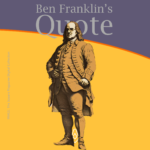 Early to bed and early to rise, makes a man healthy, wealthy, and wise. The quote is a simple rhyme that conveys a powerful message about the benefits of good habits and discipline. At its core, the quote is about the importance of creating a daily routine that includes adequate sleep and early mornings. |
 Don't judge of men's wealth or piety, by their Sunday appearances. This quote is a reminder that outward appearances can often be deceiving and that we should not make assumptions about someone based solely on what we see. |
 In a magical kingdom, wise old Ben teaches young Kia about the dangers of choosing friends too quickly. "Be slow in choosing a friend, slower in changing." It is an exploration of the deliberate care we must take in forging bonds that are intended not just for the sunny days but to weather the storms as well. |
 In a magical kingdom, wise old Ben teaches young Kia about the dangers of flatterers, using the tale of hero Gustaf's downfall due to "yes-men." The story emphasizes the value of honest feedback over constant agreement, urging leaders to seek truth over mere affirmation. Beware the sycophant's allure. |
 Fools need advice most, but wise men only are the better for it. This quote suggests that while everyone can benefit from advice, it is only those who possess wisdom who can truly understand and appreciate its value. |
 Be at war with your vices, at peace with your neighbours. - This quote suggests that we should constantly strive to improve ourselves and overcome our own weaknesses and bad habits, while also maintaining a peaceful and harmonious relationship with those around us. |
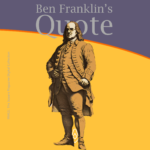 A soft tongue may strike hard - This quote is suggesting that even though someone may speak in a gentle or kind manner, their words can still have a strong impact. It's similar to the idea of a "silent but deadly" weapon. |
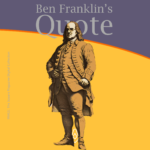 "A man in a passion rides a mad horse" suggests that when a person is controlled by their emotions, they can act recklessly and make poor decisions, similar to how a rider on a mad horse is out of control and can lead to danger. |
 “A child thinks 20 shillings and 20 years can scarce ever be spent” quote suggests that a child has an innocent and optimistic view of the future, believing that time and money are abundant and will never run out. The child may believe that 20 shillings, which is a small sum of money, is enough to last a lifetime and that 20 years, which may seem like a long time to a child, will never be over. |
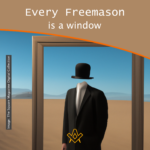 A short story why Every Freemason is a window through which other will see and decide from the experience what will be their opinion of Freemasonry |
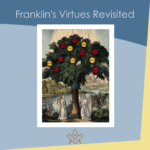 Franklin's Virtues Revisited For Today's Mason How are the virtues and the pursuit of self-improvement and knowledge as pertinent for today's Mason, as they were for Benjamin Franklin. |
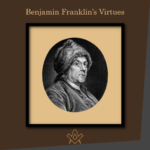 Benjamin Franklin’s Virtues, Freemasonry, and Jewish Practice and Discover his thirteen behavioural traits |
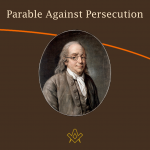 According to Benjamin Franklin’s letters, he took the inspiration for two of his parables “from an ancient Jewish tradition”. |
Recent Articles: in people series
 Celebrate the extraordinary legacy of The Marquis de La Fayette with C.F. William Maurer's insightful exploration of Lafayette's 1824-25 tour of America. Discover how this revered leader and Freemason was honored by a young nation eager to showcase its growth and pay tribute to a hero of the American Revolution. |
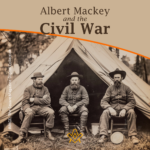 Albert Mackey and the Civil War In the midst of the Civil War's darkness, Dr. Albert G. Mackey, a devoted Freemason, shone a light of brotherhood and peace. Despite the nation's divide, Mackey tirelessly advocated for unity and compassion, embodying Freemasonry's highest ideals—fraternal love and mutual aid. His actions remind us that even in dire times, humanity's best qualities can prevail. |
 Discover the enduring bond of brotherhood at Lodge Dumfries Kilwinning No. 53, Scotland's oldest Masonic lodge with rich historical roots and cultural ties to poet Robert Burns. Experience rituals steeped in tradition, fostering unity and shared values, proving Freemasonry's timeless relevance in bridging cultural and global divides. Embrace the spirit of universal fraternity. |
 Discover the profound connections between John Ruskin's architectural philosophies and Freemasonry's symbolic principles. Delve into a world where craftsmanship, morality, and beauty intertwine, revealing timeless values that transcend individual ideas. Explore how these parallels enrich our understanding of cultural history, urging us to appreciate the deep impacts of architectural symbolism on society’s moral fabric. |
 Discover the incredible tale of the Taxil Hoax: a stunning testament to human gullibility. Unmasked by its mastermind, Leo Taxil, this elaborate scheme shook the world by fusing Freemasonry with diabolical plots, all crafted from lies. Dive into a story of deception that highlights our capacity for belief and the astonishing extents of our credulity. A reminder – question everything. |
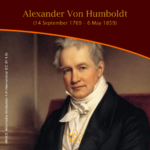 Dive into the extraordinary legacy of Alexander Von Humboldt, an intrepid explorer who defied boundaries to quench his insatiable thirst for knowledge. Embarking on a perilous five-year journey, Humboldt unveiled the Earth’s secrets, laying the foundation for modern conservationism. Discover his timeless impact on science and the spirit of exploration. |
 Voltaire - Freethinker and Freemason Discover the intriguing connection between the Enlightenment genius, Voltaire, and his association with Freemasonry in his final days. Unveil how his initiation into this secretive organization aligned with his lifelong pursuit of knowledge, civil liberties, and societal progress. Explore a captivating facet of Voltaire's remarkable legacy. |
 Robert Burns; But not as we know him A controversial subject but one that needs addressing. Robert Burns has not only been tarred with the presentism brush of being associated with slavery, but more scaldingly accused of being a rapist - a 'Weinstein sex pest' of his age. |
 Richard Parsons, 1st Earl of Rosse Discover the captivating story of Richard Parsons, 1st Earl of Rosse, the First Grand Master of Grand Lodge of Ireland, as we explore his rise to nobility, scandalous affiliations, and lasting legacy in 18th-century Irish history. Uncover the hidden secrets of this influential figure and delve into his intriguing associations and personal life. |
 James Gibbs St. Mary-Le-Strand Church Ricky Pound examines the mysterious carvings etched into the wall at St Mary-Le-Strand Church in the heart of London - are they just stonemasons' marks or a Freemason’s legacy? |
 Freemasonry and the Royal Family In the annals of British history, Freemasonry occupies a distinctive place. This centuries-old society, cloaked in symbolism and known for its masonic rituals, has intertwined with the British Royal Family in fascinating ways. The relationship between Freemasonry and the Royal Family is as complex as it is enduring, a melding of tradition, power, and mystery that continues to captivate the public imagination. |
 A Man Of High Ideals: Kenneth Wilson MA A biography of Kenneth Wilson, his life at Wellington College, and freemasonry in New Zealand by W. Bro Geoff Davies PGD and Rhys Davies |
 In 1786, intending to emigrate to Jamaica, Robert Burns wrote one of his finest poetical pieces – a poignant Farewell to Freemasonry that he wrote for his Brethren of St. James's Lodge, Tarbolton. |
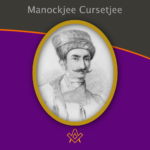 Alex Lishanin explores Mumbai and discovers the story of Lodge Rising Star of Western India and Manockjee Cursetjee – the first Indian to enter the Masonic Brotherhood of India. |
 Aleister Crowley - a very irregular Freemason Aleister Crowley, although made a Freemason in France, held a desire to be recognised as a 'regular' Freemason within the jurisdiction of UGLE – a goal that was never achieved. |
 Sir Joseph Banks – The botanical Freemason Banks was also the first Freemason to set foot in Australia, who was at the time, on a combined Royal Navy & Royal Society scientific expedition to the South Pacific Ocean on HMS Endeavour led by Captain James Cook. |
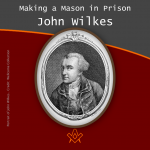 Making a Mason in Prison: the John Wilkes’ exception? |
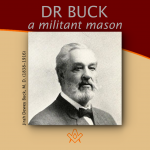 "To be a good man and true" is the first great lesson a man should learn, and over 40 years of being just that in example, Dr Buck won the right to lay down the precept. |
 Elias Ashmole: Masonic Hero or Scheming Chancer? The debate is on! Two eminent Masonic scholars go head to head: Yasha Beresiner proposes that Elias Ashmole was 'a Masonic hero', whereas Robert Lomas posits that Ashmole was a 'scheming chancer'. |
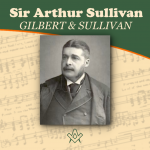 Sir Arthur Sullivan - A Masonic Composer We are all familiar with the comic operas of Gilbert and Sullivan, but did you know Sullivan was a Freemason, lets find out more…. |
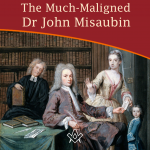 The Much-Maligned Dr John Misaubin The reputation of the Huguenot Freemason, has been buffeted by waves of criticism for the best part of three hundred years. |
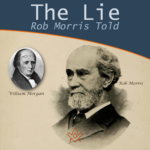 Was William Morgan really murdered by Masons in 1826? And what was the lie Masonic author Rob Morris told? Find out more in the intriguing story of 'The Morgan Affair'. |
 Lived Respected - Died Regretted Lived Respected - Died Regretted: a tribute to HRH The Prince Philip, Duke of Edinburgh |
 Who was Moses Jacob Ezekiel, a Freemason, American Civil War Soldier, renowned sculptor ? |
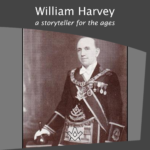 A Masonic author and Provincial Grand Master of Forfarshire in Scotland |
 Who was Philip, Duke of Wharton and was he Freemasonry’s Loose Cannon Ball ? |
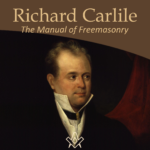 Richard Carlile - The Manual of Freemasonry Will the real author behind The Manual of Freemasonry please stand up! |
 Nicholas Hawksmoor – the ‘Devil’s Architect’ Nicholas Hawksmoor was one of the 18th century’s most prolific architects |
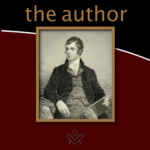 By Bro. Anthony Oneal Haye (1838-1877), Past Poet Laureate, Lodge Canongate Kilwinning No. 2, Edinburgh. |
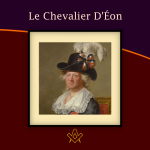 The Curious Case of the Chevalier d’Éon A cross-dressing author, diplomat, soldier and spy, the Le Chevalier D'Éon, a man who passed as a woman, became a legend in his own lifetime. |
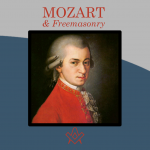 Mozart Freemasonry and The Magic Flute. Rev'd Dr Peter Mullen provides a historical view on the interesting topics |
masonic knowledge
to be a better citizen of the world
share the square with two brothers

click image to open email app on mobile device


